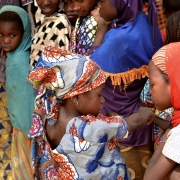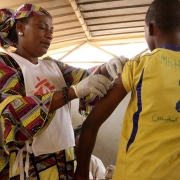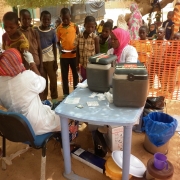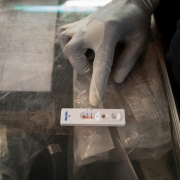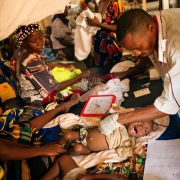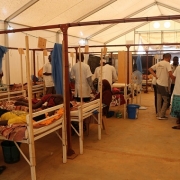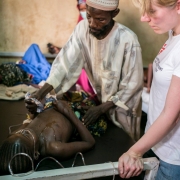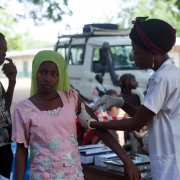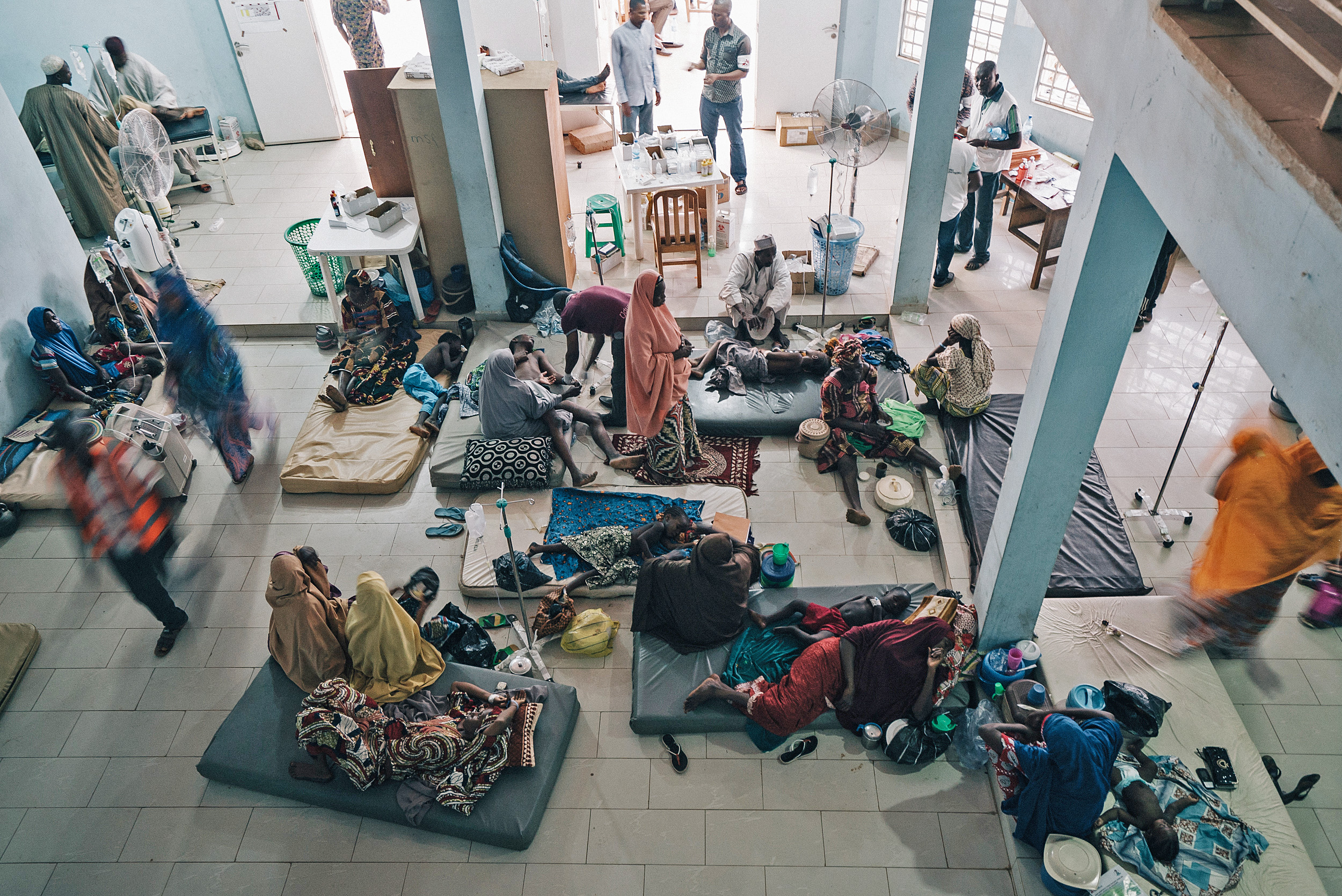
사진: 2017년 5월, 2008년 이후 나이지리아 최악의 뇌수막염 유행에 맞서고 있는 국경없는의사회 팀 ⓒMSF
수막구균성 뇌수막염
수막구균성 뇌수막염은 뇌와 척수를 둘러싼 얇은 막에 발생하는 세균성 감염입니다. 뇌수막염은 갑작스런 두통, 고열, 메스꺼움, 구토, 빛에 대한 민감성, 목 뻣뻣해짐 등을 일으킬 수 있습니다. 증상 발현 후 수시간 내에 목숨을 잃을 수도 있습니다. 심지어 치료를 받는다 해도 약 10%의 환자들은 사망에 이르게 됩니다. 치료를 받지 않는 경우, 뇌수막염 감염 환자의 최대 50%가 목숨을 잃게 됩니다.
뇌수막염은 세균성 수막염균 6종 — A, B, C, W135, X, Y — 이 일으킨다고 알려져 있습니다. 사람들은 증상을 보이지 않은 채로 이 균을 보유하고 있다가 기침할 때 세균을 전염시킬 수 있습니다. 뇌수막염은 척수액 샘플을 검사해 진단하고, 특정 항생제를 사용해 치료합니다.
뇌수막염은 세계 전역에서 나타나지만, 뇌수막염 감염과 사망은 대부분 아프리카, 특히 에티오피아에서 세네갈까지 이르는 '뇌수막염 벨트' 지역에서 나타납니다. 2010년 접합 백신이 도입되기 전까지 이 지역의 뇌수막염 유행은 주로 A형 수막구균이 원인이었습니다. 이 유형을 예방하는 백신을 맞으면 최소 10년간 감염을 예방할 수 있고 건강한 보균자가 병을 옮기는 것도 막을 수 있습니다. 그동안 뇌수막염 벨트의 여러 국가에서 대규모 예방접종 캠페인이 실시되어 치명적인 A형 수막구균 유행을 멈출 수 있었습니다. 하지만 다른 균으로 인한 소규모 유행은 계속해서 보고되고 있습니다. 2015년 니제르와 나이지리아에서 첫 번째 대규모 C형 수막구균 유행이 보고된 이후, 2016년에 보고된 C형 수막구균 감염자는 대부분 니제르 출신이었습니다. 하지만 다행히 이는 대규모로 확산되지는 않았습니다.
2016년, 국경없는의사회는 뇌수막염 유행에 대응해 총 16만9200명에게 예방접종을 제공했습니다.
Meningococcal meningitis
Meningococcal meningitis is a bacterial infection of the thin membranes surrounding the brain and spinal cord. It can cause sudden and intense headaches, fever, nausea, vomiting, sensitivity to light and stiffness of the neck. Death can follow within hours of the onset of symptoms. Even with treatment, approximately 10 per cent of people infected will die. Up to 50 per cent of people infected will die without treatment.
Six strains of the bacterium Neisseria meningitidis (A, B, C, W135, X and Y) are known to cause meningitis. People can be carriers without showing symptoms and transmit the bacteria when they cough or sneeze. Cases are diagnosed through the examination of a sample of spinal fluid and treatment consists of specific antibiotics.
Meningitis occurs throughout the world, but the majority of infections and deaths are in Africa, particularly across the ‘meningitis belt’, an east–west geographical strip from Ethiopia to Senegal, where prior to the introduction of a meningitis A conjugate vaccine in 2010, epidemics were most likely to be caused by meningococcus A. A vaccine against this strain provides protection for at least 10 years and prevents healthy carriers from transmitting the infection. Large preventive vaccination campaigns have been carried out in countries across the meningitis belt and stopped the cycle of deadly meningococcal A epidemics in the region, but smaller-scale outbreaks caused by other strains continue to be recorded. After the first large meningococcal C epidemic was recorded in Niger and Nigeria in 2015, most cases of meningitis C in 2016 were reported from Niger, without large-scale epidemics.
In total, MSF vaccinated 169,200 people against meningitis in response to outbreaks in 2016.
